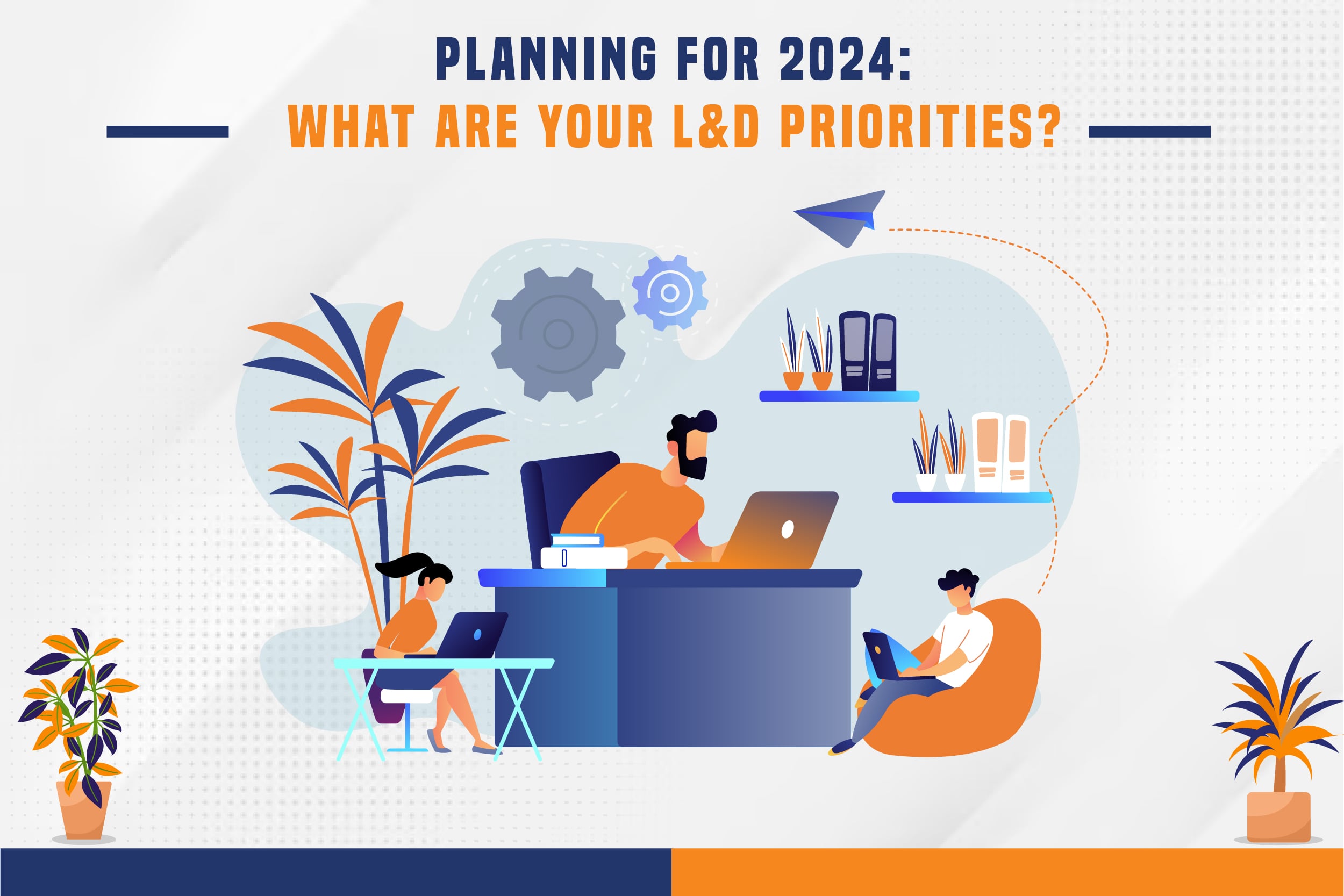
Planning For 2024: What Are Your L&D Priorities?
In today’s world, every organisation is striving to provide the best working environment for its employees and to retain talented staff for the better progress of the company. Leadership Transformation programs are necessary to become the foundation of future-proof work structures.A n L&D popularly known as the learning and development environment consists of all of the things that can influence an employee to better themselves in their field. With time, the world of L&D is rapidly changing. Thus the rapid technological advancements put challenges forward towards what a successful L&D strategy looks like, where it happens and who it reaches.
What is L&D?
The learning and development(L&D) strategy is defined as the process of empowering and encouraging employees with specific skills to upskill themselves and help in the progress of the organisation. They may be upskilled to perform better in their existing roles or reskilled to take on new roles in the organisation and fill the skills gap that is becoming common in the workplace these days. This can be considered a better result-driven approach for business organisations. Companies that support employee learning are more likely to achieve their performance targets because their teams are better knowledgeable about the market, possess stronger leadership and management skills, and have greater self-assurance.
Steps to enforce a better L&D strategy
Increase Accessibility
The L&D program should be easily accessible, flexible, and easy to understand for the employees. Often an employee has to juggle between work, home, and other responsibilities and a fixed way of accessing the material might cause a problem. Thus to eliminate any sort of challenges or barriers, companies should judiciously plan the L&D program so that the employees can access them in a hassle-free manner.
Focus on continuous learning
Companies should focus on providing a continuous learning environment. The focused skill-building opportunities provide a long-term effect for the employees and help them to assess themselves and move towards different paths in their careers. Such an environment also helps in keeping the employees motivated to do better work. Community-based learning and leadership training programs for employees can help promote a sense of belonging in the workplace which further enhances employee engagement and motivation.
Accommodate the employee's needs
The L&D strategy should be made keeping in mind the employee's needs. It should be formed keeping in mind one’s educational qualification so that one can start off from where one ended. The focus should also be on the learning style of the employee and it should be prioritised by all the companies.
Integrate learning goals with company performance goals
A learning and development environment can only be successful if the working environment and the goals of the organisation are on the right path. That’s why it’s so critical to plan learning and people's objectives side-by-side with more significant business objectives. Thus the companies can identify skills gaps or missing workforce requirements that need to be addressed to reach those goals.
Create long-term career goals- When the L&D strategy supports career advancement, employees feel valued and empowered. It also helps to create long-term career goals for the employees as they can also assess themselves in different career trajectories.
Cover your skill gaps- Conducting Leadership Skills Development Training and development sessions is fundamentally about bringing about change and closing the skills gap. Therefore, as an L&D expert, you must be comfortable implementing new training and development techniques and meeting organisational demands. It is widely seen that often there is a skill gap between the employee and the employer or the organisation and it is highly needed to cover that gap to reach the business goal. For that, the learning and development strategy helps to communicate and understand where one is going wrong and helps them to cover up for that gap.
Conclusion:
Therefore the main priority of L&D is to enhance the leadership and management skills of the employees. Establishing a culture of continuous learning and fostering a positive learning environment is a gradual process that cannot be achieved overnight. It necessitates visionary leadership at the highest levels, individuals who acknowledge the significance of Learning and Development (L&D), and who empower team leaders to facilitate the educational and career advancement of employees. So prioritise your goals and make your L&D strategy today.
